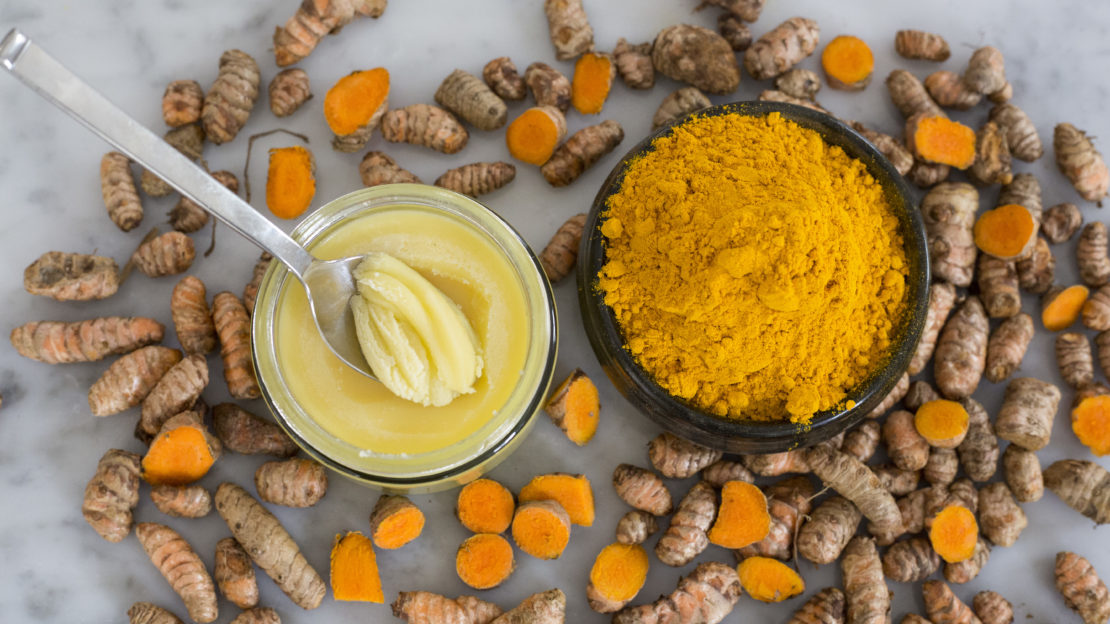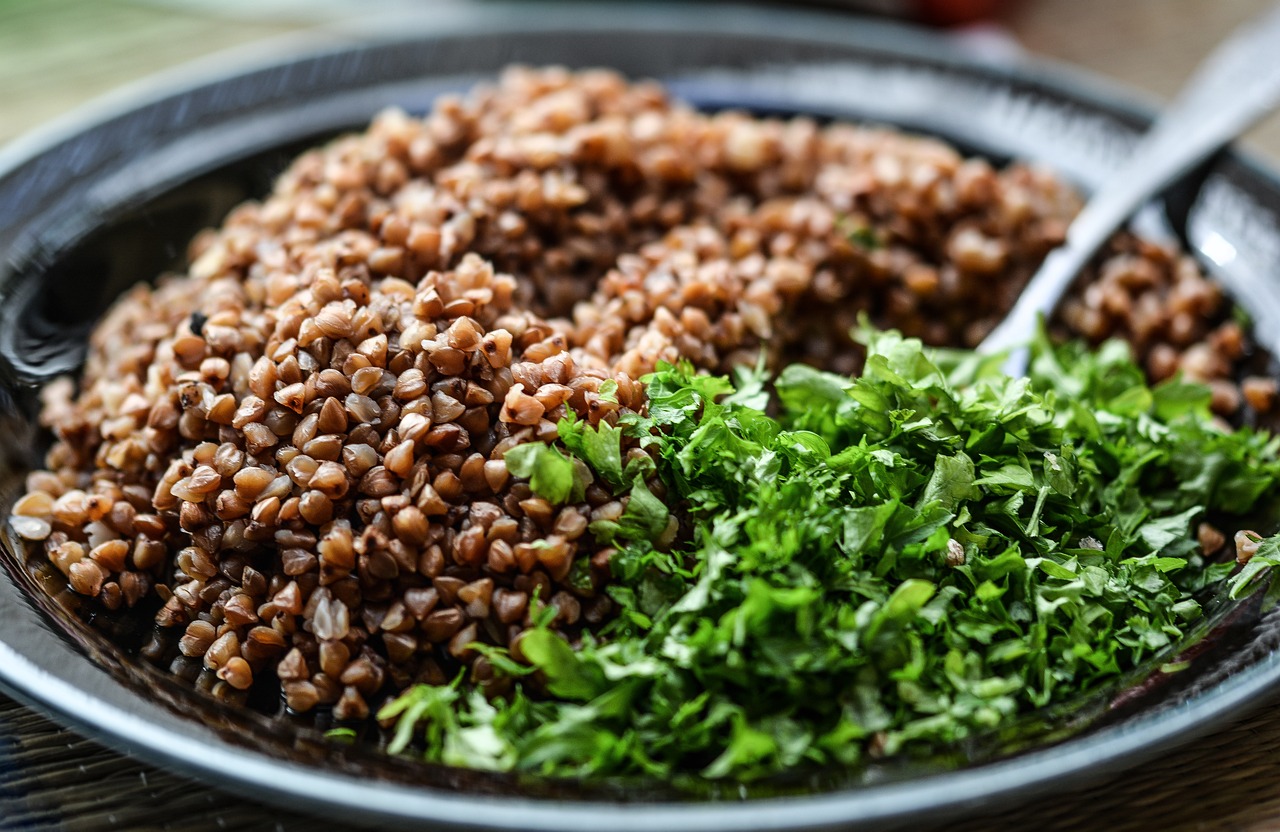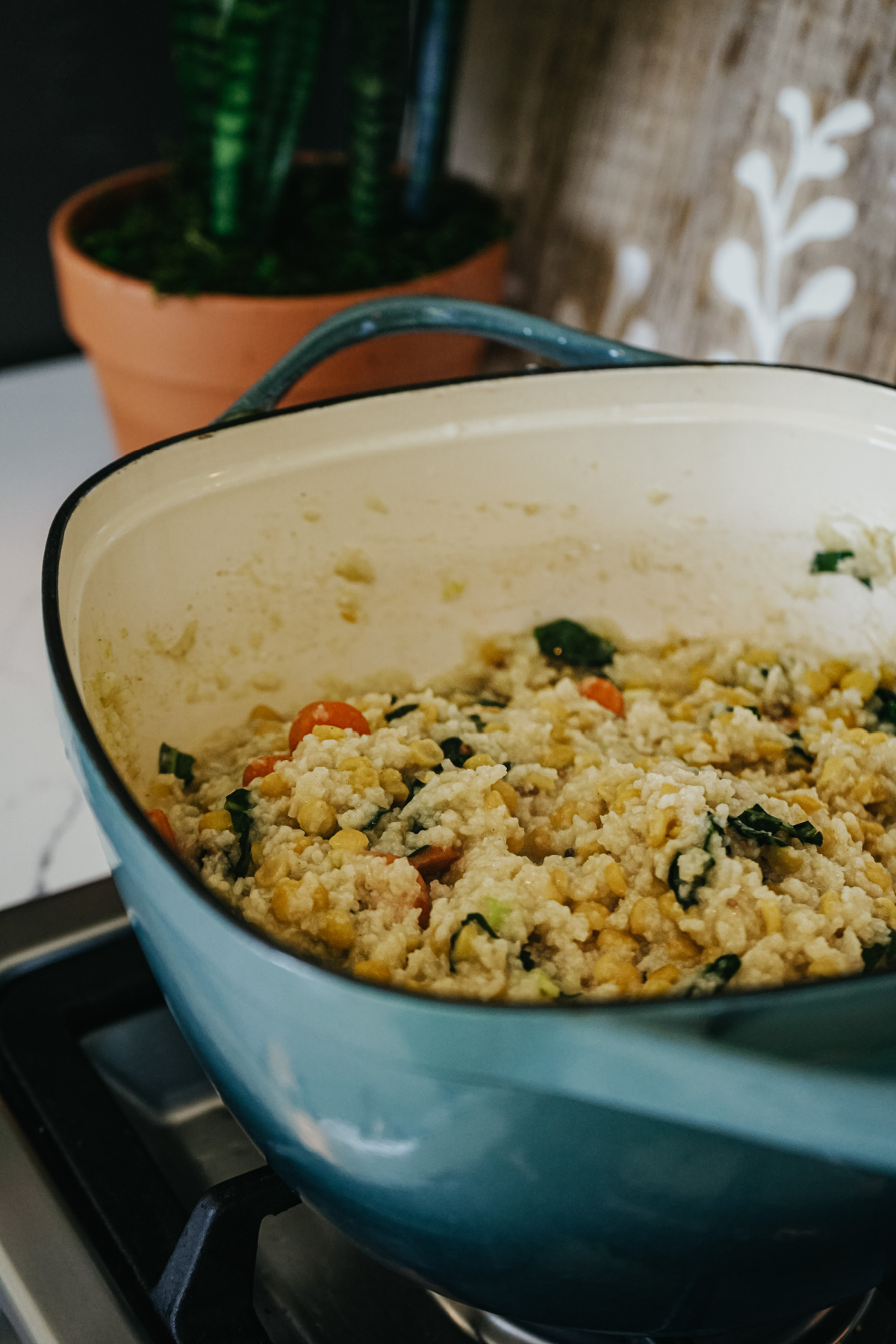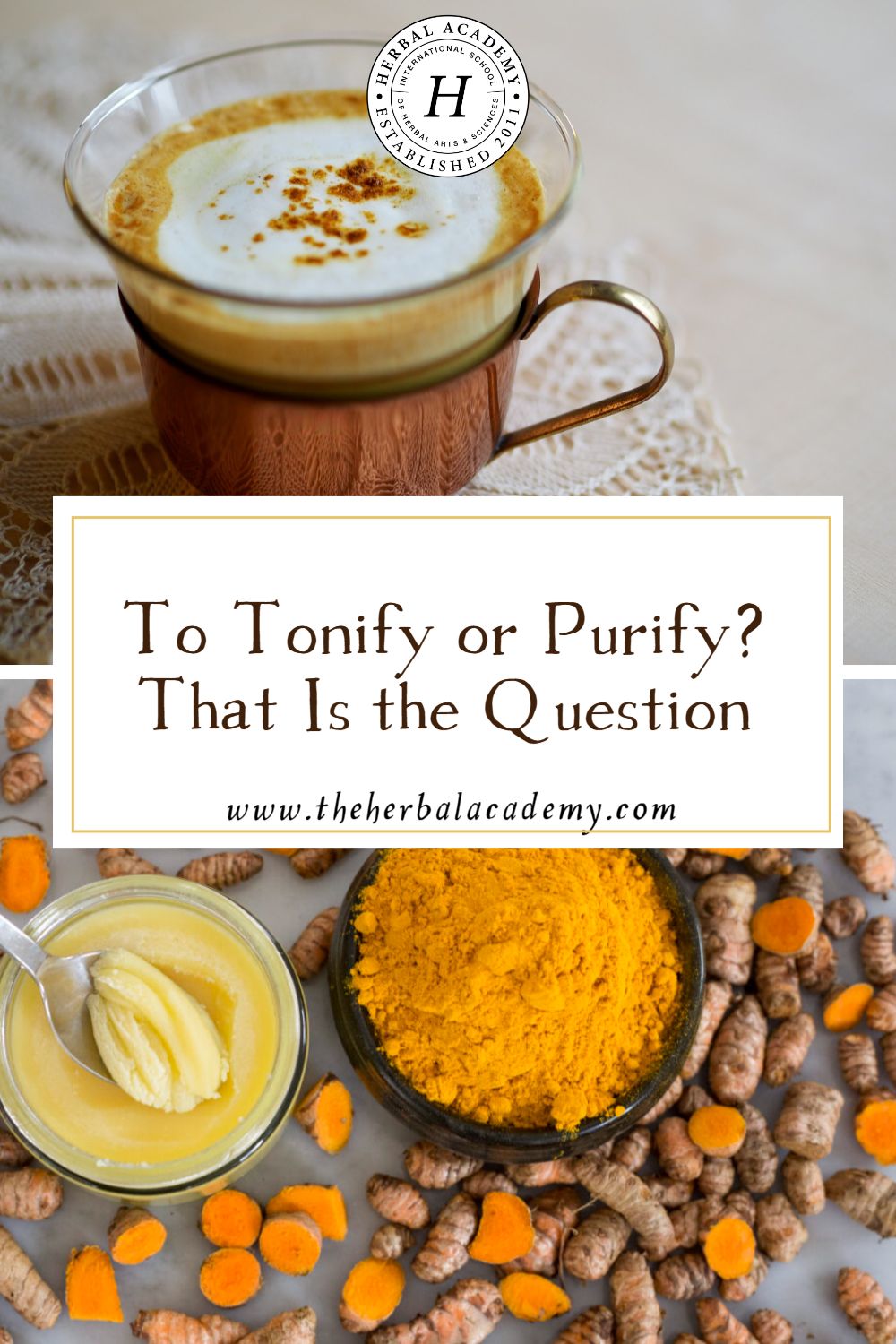
To Tonify or Purify? That Is the Question
As we bid ado to the year gone by and welcome a fresh new turn of the calendar, it is not uncommon to crave practices that create a sense of clarity and renewal. After holiday feasts and merriment, you may yearn for simpler foods or wonder if it’s time for a cleanse. However, with the cold days of winter still in full force, is cleansing a good idea? Knowing when it’s time to purify and when you are better off focusing on tonification isn’t always easy to sort out. Let’s discuss some factors to consider when weighing the need for tonification versus purification.
Heavy and Light
Taking the big picture view, ayurvedic practices are classified as either reducing (langhana) or building/tonifying (brimhana). Reducing practices are called langhana because langhana means lightness and these practices encourage lightness through purification and reduction. On the other hand, brimhana means to “make heavy” (Frawley, 2000). So, when is it best to lighten up and when do we need a little weighing down? That is the question!
Assessing the Needs of the Individual
First of all, the state of the individual must be taken into account. Purification is not suitable for the very young and very old, pregnant individuals, the weak, debilitated, or exhausted. Tonification is much more suitable for folks in those conditions (Frawley, 2000). On the other hand, if someone is in a state of fairly robust health and they exhibit signs that purification would be beneficial, then reducing practices are likely worth a try.
The presence of ama (a special ayurvedic term for undigested food matter or metabolic waste) is a good indication that purification is needed. Ama may be of a kapha, pitta, or vata nature, indicating an excess or imbalance of one or more dosha(s). Furthermore, the presence of ama is an indication that digestion (agni) is compromised, as a strong digestive fire will burn up ama (O’Donnell, 2015). Kapha ama manifests as thick phlegm, possible constipation and sluggish digestion, and a thick, white coating on the tongue. Vata ama may present as gas, bloating, constipation, and a gray coating on the tongue. Pitta ama may show up as burning indigestion, diarrhea, skin issues such as rashes or acne, and other types of inflammation (Frawley, 2000).
Achy joints, allergies, and feelings of sluggishness or fogginesss also indicate the presence of ama. If you experience a couple of these symptoms, it may be time to purify. However, even if there is ama present, you have to be strong enough to purify, so if your body isn’t up for purification, it is best to wait until you are in a stronger state or mix some mild purification practices with tonifying practices. This is where working with a practitioner can be especially helpful; an experienced herbalist or ayurvedic practitioner can help tailor a plan to you that is suitable for your needs, constitution, and condition.
What Does Purification Consist Of?
In general, foods, herbs, and lifestyle practices that are light and drying are considered foods that purify. Foods that purify may be energetically cool or warm. However, pungent herbs and spices tend to enkindle the digestive fire and burn up ama, which will ultimately help to burn up waste. Examples of light foods are leafy greens, Brussels sprouts, burdock, lettuce, apples, persimmons, and amaranth. Drying foods include cranberries, persimmons, cabbage, peppers, and kale. Pungent spices include black pepper (Piper nigrum) fruit, ginger (Zingiber officinale) rhizome, fenugreek (Trigonella foenum-graecum) seed, garlic (Allium sativum) bulb, and ajwan (Trachyspermum ammi) seed. Also, many bitter foods and spices have a purifying effect, such as turmeric (Curcuma longa) rhizome, neem (Azadiracta indica) ____, aloe (Aloe vera) leaf, dandelion (Taraxacum officinale) leaf, and bitter melon (Momordica charantia) ____ (Lad & Lad, 1994).
One can also understand whether foods, herbs, and spices are tonifying or if they purify by looking at their influence on the doshas. Many kapha-reducing foods, herbs, and spices are purifying. This is because kapha dosha is heavy and dense so practices that balance kapha cultivate lightness. Kapha-reducing foods exhibit an abundance of the bitter, pungent (hot), and astringent tastes. This is also a good way to eat with the seasons as many purifying, kapha-reducing foods are in season in the late winter and early spring and balance out the heavy, damp, cool qualities of that season. With some exceptions, individuals with a predominant kapha constitution benefit from focusing on these foods, herbs, and practices year-round. However, a kapha-reducing diet may also be appropriate for people of any constitution during the kapha time of year—late winter and early spring. That said, this is where careful assessment—either self assessment or under the guidance of a trained practitioner—is key. One’s inherent constitution, current balance of the doshas, and time of life, as well as the climate and season all play into which types of foods are optimal for the individual.

Here are some foods to include in your late winter and early spring shopping list if you have determined that focusing on kapha-reducing foods is right for you (O’Donnell, 2015):
- Broccoli
- Cabbage
- Asparagus
- Arugula
- Endives
- Leeks
- Radicchio
- Spinach
- Barley
- Buckwheat
- Chickpeas
- Tofu
- Green lentils
Also, you may want to rev up the spices during late winter and early spring as this is a cold, damp time of year which tends to cause sluggish digestion and the accumulation of ama. When you boost your digestive fire, your body is able to naturally, gently clear out excesses. The spices below will enkindle the agni for late winter and spring (or any time your digestive fire needs a little encouragement). You can use these spices individually or mix them up in pre-made blends for efficiency in the kitchen.
- Turmeric (Curcuma longa) rhizome
- Cumin (Cuminum cyminum) seed
- Coriander (Coriandrum sativum) seed
- Ginger (Zingiber officinale) rhizome
- Black pepper (Piper nigrum) fruit
- Cayenne (Capsicum annuum) fruit
- Fenugreek (Trigonella foenum-graecum) seed
- Clove (Syzygium aromaticum) bud

Timing Is Everything
Eating in a way that is generally purifying is different from undergoing a cleanse. A dedicated cleanse has a more strongly purifying effect. Even a kitchari cleanse, which is a mild form of cleansing compared to many more extreme practices such as juice cleanses, can have profound effects. If you are considering a cleanse, early spring and early autumn are generally the best times of the year. You can read more about doing an ayurvedic cleanse in the post Your Guide to An Ayurvedic Spring Cleanse.
Though it is fine to eat in a way that is gently purifying during the deep days of winter, this is not the ideal time for a cleanse as intensive cleansing can be too strongly depleting, making the body weak and susceptible to illness. Also, it is important to focus on warming foods and spices as long as temperatures outside remain cool.
When Is Tonification Best?
Wellness culture tends to be fascinated with cleansing and purifying and may not pay as much heed to tonification. However, tonification and purification are two equally important sides of the same coin. If one engaged solely in purifying practices, they may end up feeling weak and drained. If one focused solely on tonification, the likely outcome would be excess tissue and ama.
So, when is it time to tonify? The answer is highly individualized. However, if you have a vata imbalance, if you are feeling weak and fatigued, or if you are pregnant, very young, or very old, tonification is likely for you!
Tonifying foods and herbs are heavy, nourishing, and building. Examples of tonifying foods include nuts and seeds, oats, ghee, avocado oil, organic full-fat dairy products, and heavy, starchy vegetables such as sweet potatoes. A nice tonifying treat is to eat a Medjool date stuffed with almond or cashew butter. If you feel like you need some fortification, enjoy a couple of these tasty treats per day.
Also, rejuvenating herbs that assist in tonification include ashwagandha (Withania somnifera) root, shatavari (Asparagus racemosus) root, amla (Emblica officinalis) berry, wild yam (Dioscorea villosa) rhizome, and many herbs that are considered adaptogens. To accentuate their tonifying effects, these herbs are best taken in whole herb form as powders, infused in ghee or milk, or even enjoyed as herbal jams as in the case of the classical ayurvedic jam chyawanprash, which has a base of amla berry. By taking the whole herb as opposed to a tincture or extract, the nutritive, earthy qualities of the herbs are delivered more effectively. You can read more about the benefits of different types of herbal preparations in the Herbal Academy post Tincture, Decoction, Tea, or Ghee: An Ayurvedic Perspective on Herbal Preparations. Consider adding a teaspoon of ashwagandha or your other favorite adaptogen to your hot cocoa, morning chai, or evening golden milk.

Easy Herbal Golden Milk
There are many ways to prepare golden milk. This is a simple go-to recipe that is delicious, nutritive, and easy enough to whip up in a matter of minutes! Yield: 1 cup.
1 cup milk (whole dairy milk, oat milk, or almond milk work best)
1/4-1/2 teaspoon turmeric (Curcuma longa) rhizome, ground
1/3 teaspoon ashwagandha (Withania somnifera) root powder or other favorite adaptogen
a dash of ginger (Zingiber officinale) rhizome, ground
a pinch of cardamom (Elettaria cardamomum) seed, ground
a pinch of black pepper (Piper nigrum) fruit, ground
1 tablespoon ghee or coconut oil (optional)
To Use:
Enjoy a warming, soothing mug of golden milk in the evening, or any time you feel like you could use a touch of spice and nourishment.
In Closing,
There are many factors to consider in determining whether it’s best to purify or tonify. Before deciding which approach to choose, consider your current state of health, inherent constitution, the season, time of year, and your desired outcome. Though it can be initially confusing to sift through the various options on how to purify and tonify, the good news is that you can tailor a wellness plan to fit your needs, rather than being all-or-nothing.
However, the main thing to consider if you are contemplating whether to purify or cleanse, is whether you have the physical reserves to undergo reduction practices. If the answer is no, it is best to focus on fortification. Your body will tell you when you are ready for purification. Also, seeking the guidance of a trained practitioner can help light the way, offering concrete guidance as to the best approach for you.

REFERENCES
Frawley, D. (2000). Ayurvedic healing: A comprehensive guide. Lotus Press.
Lad, U., & Lad, V. (1994). Ayurvedic cooking for self-healing (2nd ed.). The Ayurvedic Press.
O’Donnell, K. (2015). The everyday Ayurveda cookbook: A seasonal guide to eating and living well. Shambhala.









